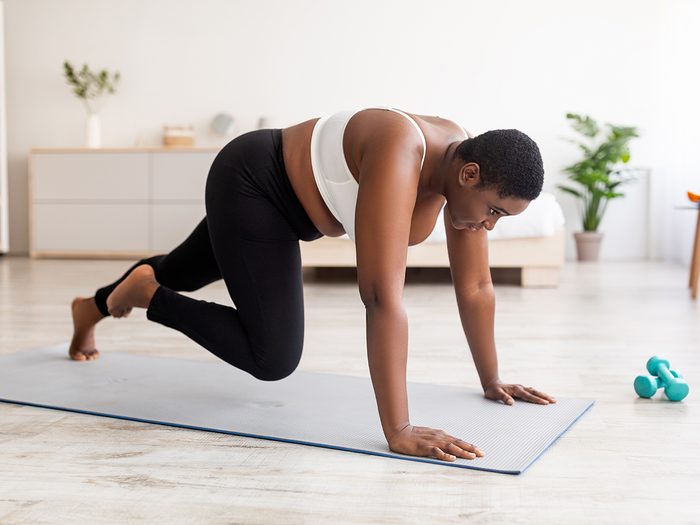5 Reasons to Strengthen Your Core

The core is about more than just ab muscles—it's the body's powerhouse. Here are five amazing things that happen when you strengthen it.
Your body’s core does it all—it facilitates movement and houses your inner organs and central nervous system. In other words, it helps you do just about everything. Here are five reasons to work on strengthening it.
1. Help prevent injuries
Building a strong core takes more than a few crunches. For Martha Purdy, a physiotherapist and Pilates instructor with Halifax Health Centre, developing a strong torso means building both core stability (those deep internal muscles close to the spine) and core strength (think “six pack” abs).
“It’s important to build core stability first, and then build core strength,” Purdy explains. “You want to get the deeper muscles working first.” Purdy says when you’ve got a strong core, “everything else will fit into place on top of it.” This means your overall fitness will improve, making you less prone to injury down the road.
Even though it’s easy to presume that when you’re moving, your extremities do most of the work, the opposite is true: most movement starts at the centre and moves outward. A rock-solid centre will help ensure that your movements are strong and pain-free.
A simple but effective exercise for building core stability is to draw in the abdominal muscles (think about your belly button pulling away from your pantline), hold for five breaths, and then relax. Repeat 10 times. Purdy recommends doing this 10 times a day.
She also suggests women practice Kegel exercises, drawing in the pelvic floor to strengthen the lower end of your core (with the added bonus of better bladder control).
2. Protect your inner organs and central nervous system
Staying healthy also means protecting those vital systems below the surface. Your core is not only where your organs and central nervous system do their busy work, it’s also where your body’s largest (and most important) veins and arteries are based. Keeping strong core muscles will help ensure everything stays protected as you move through your day.
Renee Whitney, a Kingston-based personal trainer and owner of Focus Personal Fitness, uses the spinal cord as an example: “Your spinal cord is everything,” she explains, “but if you have pressure on it because it isn’t well supported by your core muscles, then it is going to affect your movements. It will eventually cause pain, and that will affect the quality of your life.”
3. Strengthen your core to back pain
Back pain is a common side effect of a weak core. “When our abdominals are weak, it’s often because our back muscles are overly strong,” says Whitney.
Building core strength will help bring balance to the front and back of your body. Sitting at a desk all day doesn’t help, either. “Not being mindful of how we’re sitting, and not engaging our core, can lead to things like compressed discs in our spine,” Whitney explains.
She says many people make the mistake of sitting for long periods with a tilted pelvis and an arched back, rather than sitting tall on their “sit bones” (think about the boney part of your bum pointing straight down).
To work your core at the office, Whitney suggests sitting on a stability ball rather than a traditional chair, because the sense of instability and the movement it creates forces your abdomen to stay engaged.
4. Get a strong, confident posture
If your core is strong, you’ll be hard-pressed not to carry yourself with confidence. “A tall, upright posture exudes strength,” says Whitney. “It gives the impression that this person is in control of their life.”
A slumped posture, on the other hand, looks weak and defeated. Whitney suggests practicing good posture when you’re in the car, by sitting up properly, and then adjusting the rear-view mirror accordingly. As soon as you start slumping, you’ll lose sight of yourself and you’ll have to sit up tall again.
5. You’ll feel better
Once you’ve developed your core stability, you can start working on the more superficial core muscles to build strength you’ll be able to see.
Exercises like the “plank,” “bridge” and other abdominal moves are great ways to get started. Classes and workouts that incorporate Bosu and stability balls are another good option.
“It really is about working from the inside out”‘ says Purdy about building core strength. “Just because you’re strong, it doesn’t mean you have a strong core. It’s really something everyone can work on.”




